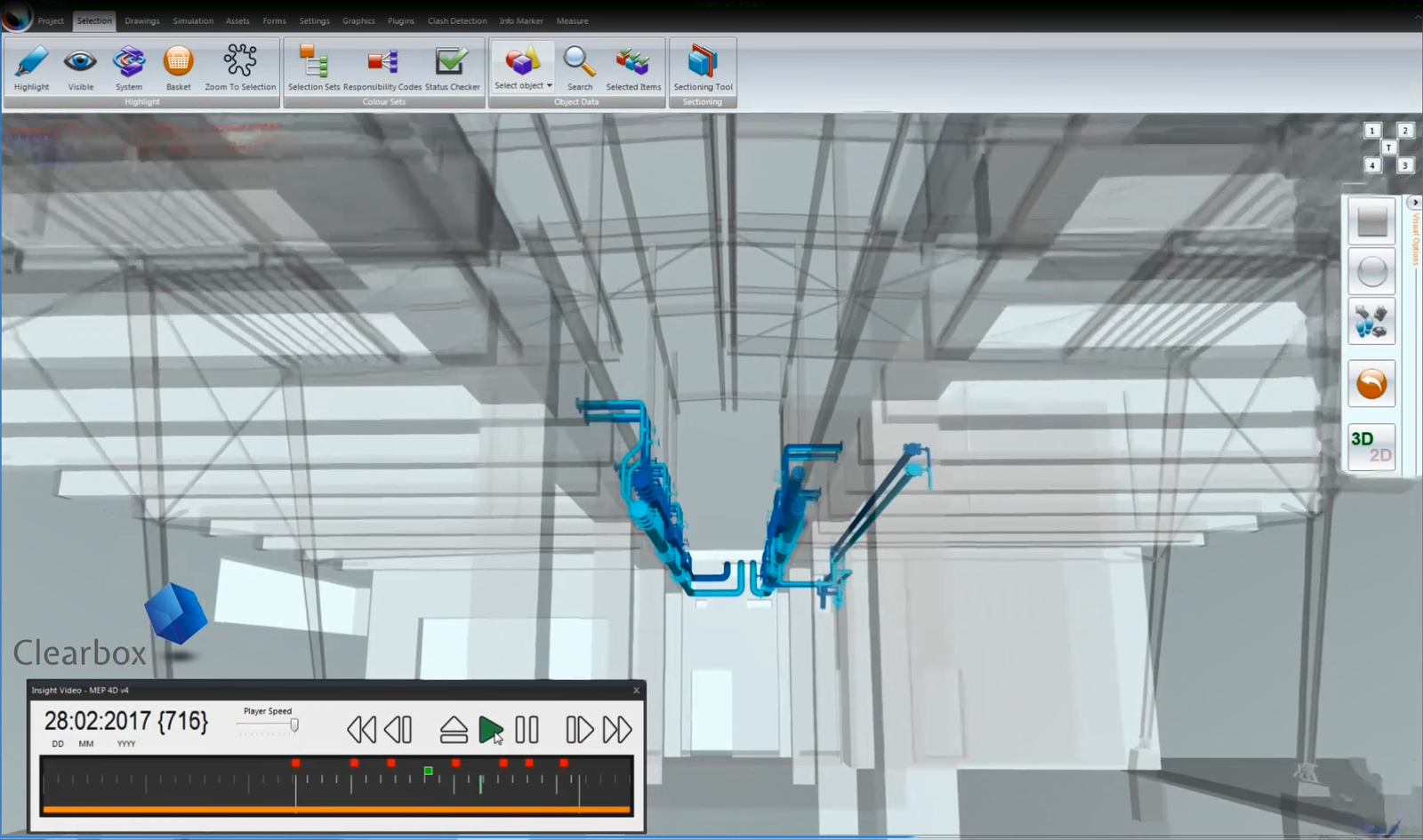The Opportunities from 4D Simulation

To enable the people involved in a project to gain an easy understanding of project progress and the planned sequence of works, 4D simulations are well recognised as an excellent medium to communicate.
The same applies at tender stage, when representations prepared by multimedia teams are often used in Client presentations to help explain the Contractor’s plans.
However, the next level of opportunity, connecting the Building Information Model (BIM) to the programme, an option previously constrained by the lack of available, easy to use tools, has now become a realisable opportunity.
It is commonly accepted that about 10% of design and construction time can be saved by the use of BIM. 4D communication is part of the step change to realise and improve upon this opportunity. Wherever and whoever you are trying to communicate to, operatives at site inductions, directors at project reviews, visitors to site, or for your own purposes, the power of a visual representation, or indeed an interactive time-lined visual representation, is immense.
Technology to date has not made it quick or easy for people to repeat the process of linking dates with objects in a model and enabling rapid re-sequencing. This is a critical downfall, as activities are commonly amended and dates changed frequently during project delivery. This is caused because currently, a single model and a single programme are fused together for this one off exercise. This fusion is permanent, so when amendments are required the whole task needs repeating from scratch, wasting time and resource.
Traditional 4D tools are too restricting to make them practical in the delivery phase
The traditional way to link the 3D model to the project programme is to take individual activities and associate them with modelled components. Projects naturally range in size, but a good size complex project can easily yield 10,000+ activities and tens of thousands of objects in the model. Currently, the task of association is not for the faint-hearted and will only be possible if your viewing software can handle the file size of the model in the first place. Once the model and programme are hard-wired, pushing another programme into the same model is generally not possible.
Accessing the BIM at a data level enables new faster ways of working
In BIM we know a lot about the object; we know what it is, its size, its location, potentially its cost and the labour associated with it. Indeed, in a data centric solution to BIM, such as the Clearbox BIMXtra solution, all the associated information is held in a central data environment. This can be accessed readily by project stakeholders through a variety of interfaces within the system.
If the model and data association is undertaken in a data environment, the connections, including those between programme and object, can be re-created at will. This is especially important when consultants update models as the re-association can take place with minimal effort. The BIMXtra process relies on its toolsets within the system to find the right objects to associate with the activities, as opposed to other solutions which require the manual adding and updating of codes in the model, which is a task that constantly causes frustration to the numerous people that need to participate to provide the output.
Associate via a data platform and we can add value to the outcome
This approach of associating the model and programme within BIMXtra also allows all the material resources to be aggregated, by activity from the components that are automatically associated with the activities in the programme. This aggregation of the material resources comes with the flexibility to associate cost and labour and allows all of these resources to be pushed back to the programme.
In effect, the association of the model and programme along with material, cost and labour resources can be updated within minutes, not the days or weeks currently required.
The flexibility and speed of this solution which allows you to derive 4D simulation, allows repeatability. It is this repeatability, combined with the effective association of an installation date for every component, that allows the process to be completed quickly at regular intervals, perhaps even a few moments before the inevitable monthly progress meeting!
Visually compare versions of programmes
With 4D simulation via the BIMXtra data centric approach taking place outside of the programme and/or the animated sequence, we are also able to run visual programme comparisons i.e. between planned and as-built, or a comparison of different build solutions. This takes place at the same speed as the single programme association and provides valuable simulations and comparisons with minimal effort.
Our ability to associate and repeat, and then compare and repeat the association of model and programme in superfast time changes our ability to be able to use 4D visualisation on the main construction model, and in doing so enables better communication to all, and more accurate association of the work scope with a most essential aspect of our project controls.
Our solution to provide 4D simulations is targeted to provide ease of use to those involved in project delivery, not limited to those with specialist training in CAD solutions. It allows you to quickly develop and subsequently change and visualise build sequences with the objective of opening up the benefits to the whole project team, saving time and money in the development of the visualisations and the project delivery.
Contact us to find out more about how we can help you with your 4D simulation requirements.